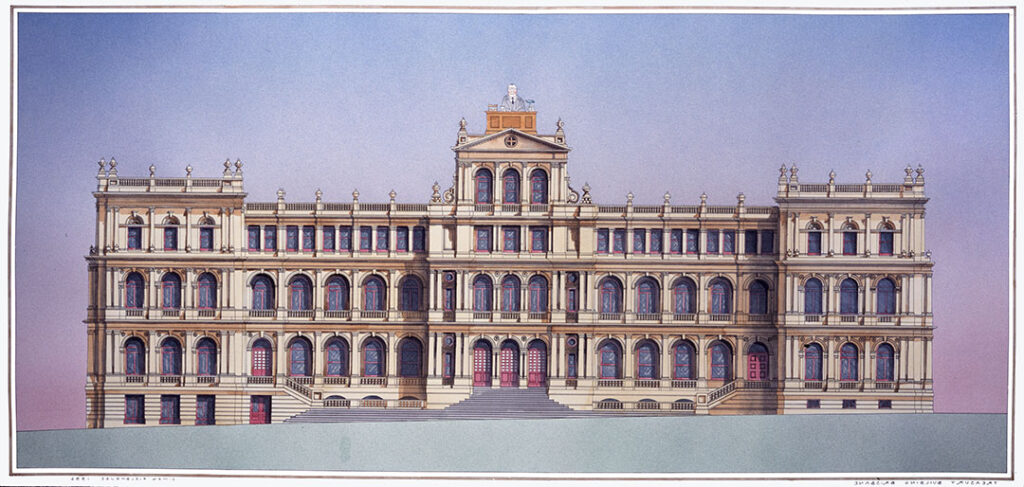
The Former Treasury Building in Brisbane
The Former Treasury Building in Brisbane, Australia, stands as a majestic testament to the city's rich history and architectural grandeur. Located in the heart of the central business district, this iconic structure is a striking blend of architectural styles that embodies the evolution of Brisbane as a thriving metropolis.
Built in 1889, the Former Treasury Building was designed by John James Clark, the Colonial Architect of Queensland at the time. The building's architectural style is an eclectic mix of Renaissance Revival and Classic Revival elements, which was typical of the late 19th century. The façade is adorned with intricately designed columns, pilasters, and ornate friezes, which create a sense of opulence and elegance.
One of the most remarkable features of the building is its sandstone exterior, which was sourced locally. The use of this material not only adds to the building's aesthetic appeal but also pays homage to the abundance of sandstone found in the region. The sandstone exudes a warm, golden hue, which gives the building a sense of timeless beauty and a connection to the land.
The Former Treasury Building's interior is equally impressive. The grand staircase, with its ornate wrought-iron balustrades and elaborate plasterwork, welcomes visitors into a world of old-world charm and sophistication. The building was designed with an emphasis on natural light, featuring large windows and an open courtyard. This architectural choice creates an inviting and airy ambiance, making it an ideal setting for various functions and events.
Another notable architectural aspect of the building is its clock tower, which stands tall and proud, offering panoramic views of the city. The clock tower was added in 1922 and is a fine example of the Renaissance Revival style. It not only serves as a functional timepiece but also as a symbol of Brisbane's progress and prosperity.
The Former Treasury Building played a significant role in Queensland's history. It was the hub of economic and financial activities in the state, housing government offices and treasury functions. The design of the building was intended to reflect the power and stability of the government and its commitment to responsible fiscal management.
In recent years, the Former Treasury Building has undergone extensive renovations to transform it into a luxurious hotel, restaurant, and event space. These renovations have preserved the historical and architectural integrity of the building while breathing new life into its use.
In conclusion, the Former Treasury Building in Brisbane is an architectural gem that stands as a testament to the city's rich history and the architectural splendor of its time. With its striking sandstone façade, ornate interiors, and iconic clock tower, it has become a symbol of Brisbane's evolution from a colonial outpost to a thriving metropolis. The adaptive reuse of this historic structure as a luxury hotel and event space ensures that its legacy continues to be celebrated and cherished by both locals and visitors. It remains a source of pride and a touchstone for those who appreciate the timeless beauty of architecture and its role in preserving the past while shaping the future.